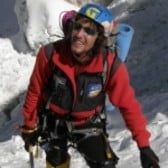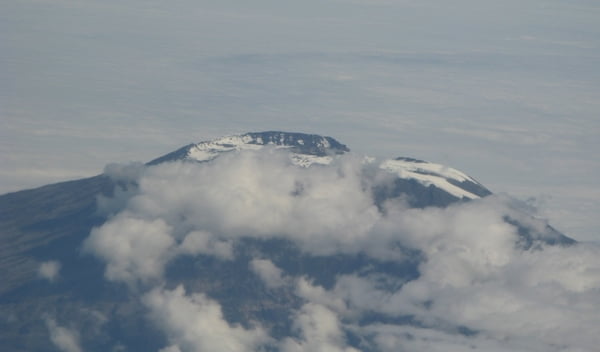
Sergey Kofanov
47 years, Australia
ALL YOU NEED TO KNOW BEFORE CLIMBING MOUNT KILIMANJARO SAFELY
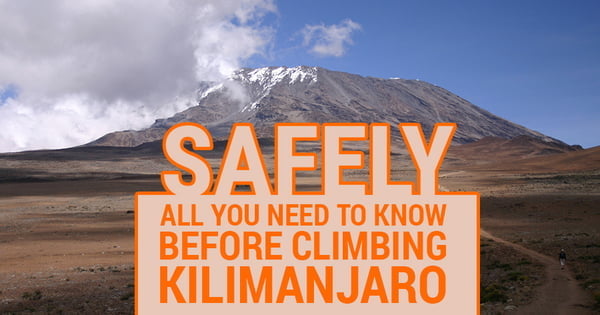
If you hear that climbing Kilimanjaro is a piece of cake, don’t believe it. I climbed it at least 15 times (and it is only until the moment I stopped counting), and I can assure you that every time we had to fight to survive. Probably, I can remember a couple of relatively simple climbs, but they were due to the fact that I flew to Tanzania already well acclimatized after climbing Mount Everest or Denali, so that these isolated cases do not count. In general, climbing Kilimanjaro isn't an easy, and this despite the fact that you've probably heard things like "high percentage of achievement...", "more than 30 000 people every year...", "seven-year child successfully climbed it...", " 75-year-old grandmother conquered..." and other made up stories. All these cases have nothing to do with your climb, so just forget about them and do not let these facts affect your preparation for this serious event. Below I tried to structure all my knowledge and experience that you need for a safe and successful climb of the highest peak in Africa.
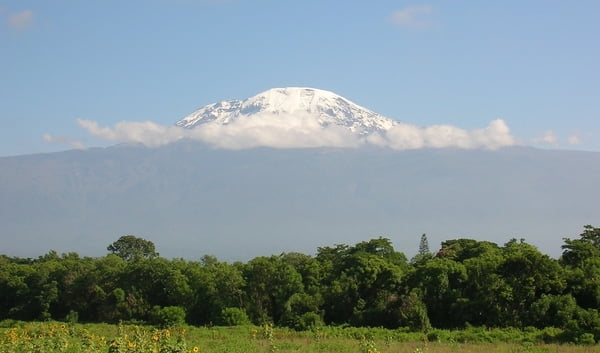
Mount Kilimanjaro as it seen from Arusha city
So you decided to climb Kilimanjaro. Let's leave aside your reasons, because they have no special meaning in this case. What matters is the fact that in the near future you are going to take your body to a height of 6000 meters above sea level (ASL), and in 99.9% of cases, this will be your first experience of staying at such a height. The task gets harder by the fact that you have to do it in a very short time. The average time spent by climbers is 5-6 days, and it includes the descent from the summit that takes 2 days. By this way, if you don't consider the descent, you will need to climb almost 6000 vertical meters in only 4-5 days! Experienced climbers (I think that after two climbs on Everest I have every right to identify myself between the members of this category) that climb professionally peaks over 6000 meters, recommend to gain no more than 700 vertical meters daily. Otherwise you may be subjected to cerebral and pulmonary edema. Doctors say the same, but they decrease this level up to 500 meters daily. I agree that gaining 500 meters daily at 2000 meters ASL is much safer than 500 meters daily at 5000 meters ASL, but I hope you understand my position. In the worldwide mountaineering practice climbers do not climb 6000 meters of altitude in 4-5 days. It's just impossible!!! Oh, sorry, I forgot one exception: Kilimanjaro. Don't worry, you won't forget any these vertical meters, as it is an unforgettable experience. You will particularly appreciate it during your summit push when during the first six hours of your climb in the darkness, the icy wind will penetrate your dehydrated body, and you will be fighting with strong migraine and nausea, simultaneously remembering each ingredient of your dinner while avoiding to steep scree slopes and turn inside out your knee. Oh, I guarantee you that this night your internal altimeter increase its sensitivity threshold, and you will remember not only each vertical meter, but every centimeter of your first high-altitude adventure. Do you still want to go on Kilimanjaro?!? Then well, let's move on!
HOW TO CHOOSE A TOUR OPERATOR?
The Internet abounds with attractive offers from various tour operators. Some of these proposals are worth hundreds of dollars, and some thousands. More than 200 local tour operators are authorised to organize expeditions, and more than 5000 tour operators successfully resell these adventure tours worldwide. Of course they are not the final provider of this service. How to make such a difficult choice? I recommend you to talk to someone who has already been on Kilimanjaro. This person, has surely already done the entire provider selection work. Such a person will tell you what exactly he liked while making his choice, and any mistakes could have been avoided. In addition, this person is likely to have seen neighboring expeditions, and can tell you about the benefits of the tour operators, who for some reason were not included in his final shortlist. An feedback from an experienced person is the most valuable information that you can get while making your choice and that you can rely on. The global Alpine Community is small enough. Surely you can find a friend who knows a guy who knows a guy who has been on Kilimanjaro. Call him. I can assure you - he would be happy to share with you his mistakes and small victories. Feedbacks and word of mouth are the two pillars of the global Alpine Community. They make mountains closer and let us safely climb them. Do not try to deceive yourself and don't make a choice based only on cost. Price certainly is an important factor, but it's not the only one. Similarly, you shouldn't choose the cheapest option because it may result a fraught with hidden pitfalls for which you will have to pay on the spot. Also, do not buy a tour from some global operators that simply resell services. Yes, at first sight, a global tour operator reduces the large number of risks in terms of the various guarantees and so on and so forth ... But consider that in the most difficult moment of your expedition, when you will be stumbling to overcome the last meters before the top, there won't be a global tour operator next to you but a simple black guy who works as a guide in a small local travel agency. And you certainly will want him to be satisfied of his salary, in order to feel that he is responsible for your health, to have the necessary experience ... At that moment, he will be the closest person to you in the entire world, and certainly that person will not be a sales manager sitting in a spacious office from whom you bought the tour. So do not be lazy, make a few phone calls to your friends, or friends of your friends, and get the contact details of a trusted local travel agency, to which you can address all of your questions, hopes and expectations.
WHAT IS THE MOST APPROPRIATE CLIMBING SEASON?
Each mountain has its most favorable climbing seasons. Typically, the climbing peak of the Kilimanjaro takes places during the driest and warmest months of the year: January, February and September. Mount Kilimanjaro is located almost on the equator, where the year is composed by two rainy seasons. One (long) takes place from the end of March until July, and, the other one (short), from late October to December. But, from my own experience, I can say that due to worldwide global warming, it became that messy that I saw heavy rains on Kilimanjaro in January and did not see any cloud in May. So I would say that the Kilimanjaro could be climbed at any time of the year. I even prefer monsoon periods, because at this time, there are very few people on the mountain, and you have every chance to face the mountain alone. But this does not mean that I encourage you to make your choice in favor of the rainy season. I'm just saying that it should not be the issue when choosing your travel dates. And keep in mind that if you are targeting the most popular months of the year, you must book your tour in advance as possible to ensure a place in the mountain huts. And, of course, be prepared to meet more people than you would find in the rush hour at your favorite shopping center if you choose the most popular routes.
HOW TO CHOOSE A ROUTE FOR THE ASCENT?
There are six approved by TANAPA standard climbing routes and a special one for descending, on Kilimanjaro. In addition to the TANAPA approved routes, there are a few more difficult and special equipment requiring routes such as the "Polish Glacier" or "Western Gap", but they are unlikely to catch your attention. It is possible to climb the Kilimanjaro from Kenya, as the mountain is between Tanzania and Kenya. But according to an agreement between the two countries, climbing from Tanzania is only allowed. Kenya doesn't have enough infrastructures and there are local police stations to prevent unauthorized climbing.
There are two tourist routes that will take you to the top of Kilimanjaro: Marangu (the only route, equipped with huts) and Machame (respectively, they are the same «Coca-Cola Route» and «Whiskey Route» in the folklore of local guides and climbers), and such camping routes as Lemosho, Shira, Umbwe and Rongai (the only route that begins with the Kenyan territory). Climbers on the Marangu and Rongai are obliged to descend the Marangu route, the remaining four routes descend on a special route for the descent - Mweka. Marangu and Machame are the most visited and tour operators’ favorite routes, as both they have a "permit offices" (for registration permits for visiting the national park) at the gates to the national park, and therefore less complicated procedure for obtaining a climbing permit (directly behind the particle and a half before the start). For those going on other routes, it is necessary to obtain a permit at the Marangu or Machame checkpoints.

Day 1: The easiest day of your journey, do not expect it to be the same every day
Each route is unique, so choose among them the one that will suit you mostly as this is not a trivial task. I recommend you to start making your choice from answering the following question: "Are you ready to spend 6-7 nights in a tent, or do you prefer to sleep in a hut on a soft mattress?". If you lean to the second option, then you almost have no choice. Your only option is the Marangu route.
Personally, I really like Marangu as it's always fun. In the evenings, you can spend your time in a common dining room and socialize with other climbers. In addition, if you are not lucky with the weather, it is better to sit under a roof with some friends than in a double tent. And as a bonus it is easier to organize rescue on Marangu. If something happens, local guides will need just a few hours to take someone to the hospital. On the wide and well-groomed Marangu route trail it is easy to use a special stretcher on wheels, on which people can be taken to the nearest jeep in 2-3 hours in case of emergencies. On other routes, this is not possible, since trails are narrow and steep, and it is forbidden to use beasts of burden in the national park. If you are not afraid of spending your nights in a tent, then I would recommend you to choose the Machame or Lemosho routes as both they are interesting and beautiful. In case you are looking for adventure, your could choose between the Shira, Rongai and Umbwe routes. All of these routes are very well described on the internet, so it won't be difficult to choose your favourite one. I can only add that the Marangu route is considered, by most guidebooks, the easiest route. The Umbwe route is the most difficult.
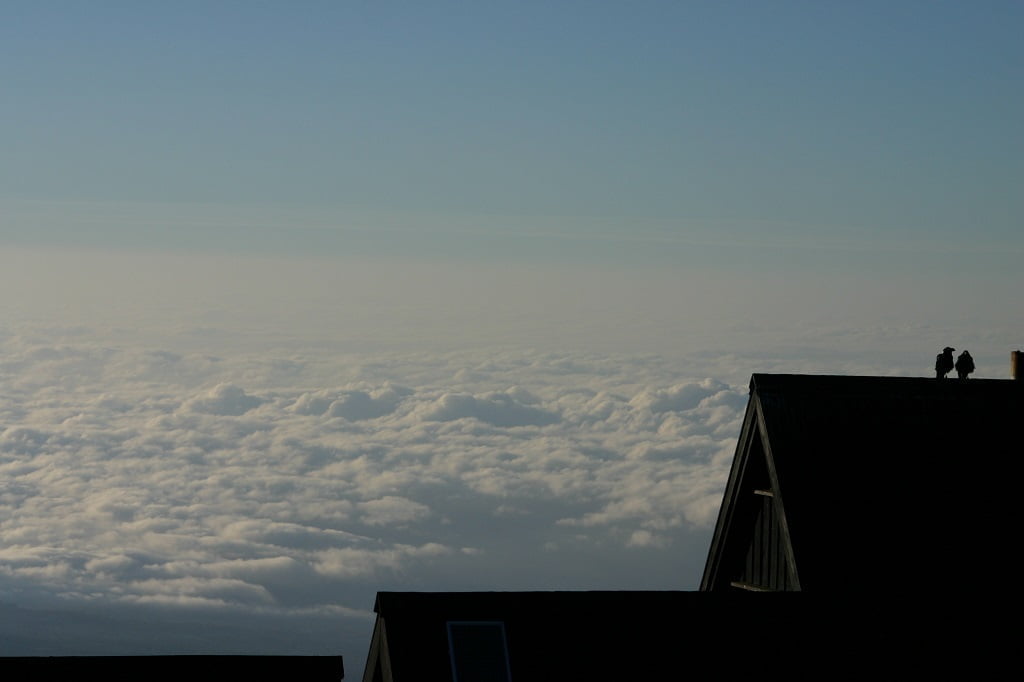
Horombo Hut at the sunset above the clouds
HOW MANY DAYS DO I NEED FOR A SUCCESSFUL AND SAFE CLIMB?
The number of days required to climb Kilimanjaro depends on the route. Some routes are faster (5 days), some of them are slower (7 or more days). If we talk about classic routes as Marangu and Machame, they are both require 6 days, but I recommend you to negotiate with your travel agency and ask them to expand your climbing program up to 7 days. An extra acclimation day will greatly improve your chances to successful climb the mountain, and in addition, will greatly facilitate the summit day. Unfortunately you won't be able to ask for it while being already on the route as it should be done in advance, because a travel agency should organise all the logistics, reserve huts, porters and guides, ensure appropriate food and water supplies in advance. Of course, you will have to pay a little money for the extra day, but trust me it's worth it. In addition, you will have the unique opportunity to visit the local attractions, which are not covered by the standard 6-day climbing program (eg, Zebra Rocks on the Marangu route).
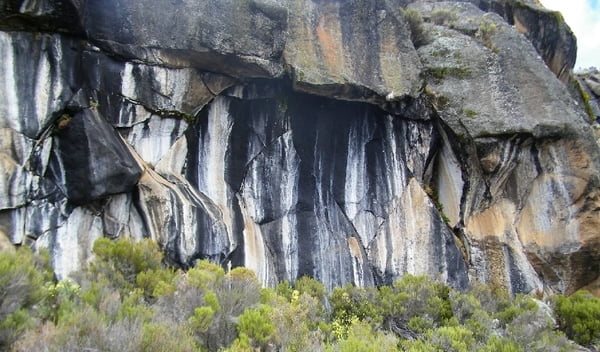
Zebra Rocks - a good choice for a walk in an extra day of acclimatization
WHAT KIND OF TRAINING IS NEEDED BEFORE CLIMBING?
Do you remember the movie "Vertical Limit" where climbers run up and down the stairs with a heavy backpack on their shoulders in order to get ready for a climb? Well, this is definitely not your case. Keep your knees for other occasions. You will not have to carry heavy backpacks while climbing, as all of your belongings and public equipment will be borne by porters. You will just get a small backpack, containing your snack, bottle of water and a rain jacket. If you are physically healthy and you don't have any serious medical contraindications, you probably won't need any special training program.
In general, I would recommend starting doing simple exercises to improve your cardio level a couple of months before the climb. These exercises include regular light jogging or walking, but no more than 2 or 3 times a week. If you have any chronic health problems, that may be unpleasant surprise for your guides, such as, being vegetarian or being allergic to burnt porridge smell, make sure to report them in advance to your travel agency. In more severe cases, consult your physician and do not expect you to find the right medication in Tanzanian pharmacies. Bring everything you need with you.
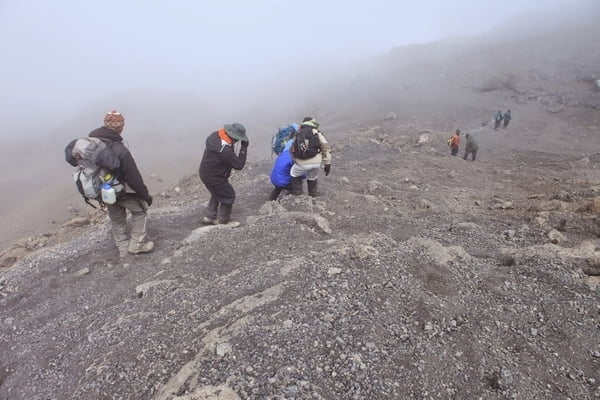
The descent from the summit is on scree slopes. Beware of loose stones
WHAT EQUIPMENT IS NEEDED?
Based on my observations, I concluded that in most cases, climbers bring with them too much equipment, especially clothes. This fact is easy to understand as for many of them this is the first high-altitude climb and they don't know what to expect, and therefore approach equipment procurement with panic. After hearing about 6000 meters altitude, shop assistants, beg you won't run away and take out of a dusty warehouse corner the most expensive high-altitude mountaineering boots on which they already gave up, and so on ... I hope my point is clear. I climbed Kilimanjaro with unlaced sneakers as a challenge of a bet, but I do not recommend anyone to repeat the "feat". You won't get any rewards you for these. I agree with the fact that the gear should be good, but it does not mean that you need the latest model of the technical shell gore-tex jacket or downsuit to perform technical climbing. You may do well just with your clothes for skiing. Balance always matters. Keep in mind that the vast majority of local travel agencies limit the weight of the equipment, which will carry your porter. As a rule, this figure does not exceed 15 kg, and in my opinion it's more than enough. The final set of items in your suitcase will be slightly different depending on the chosen route, but more or less a list of equipment is almost the same. On the Mountainplanet.com I created a list of equipment with examples of the models I recommend you, and attached it to the Marangu route profile. You can access it through this link.
I might add that such equipment as sleeping bags, trekking poles, boots, headlamp and thermos can be rented at rental points. You may find many of them in Arusha and Moshi cities. But I strongly recommend you to use this option only as an emergency option (for example, in case of lost baggage). Someone else shoes may hurt your feet, and I compare a sleeping bag with a toothbrush: it is always better to have your own one, than another's.
ANSWERS TO OTHER FREQUENTLY ASKED QUESTIONS
What other points should I focus on?
Make sure to take a sunscreen and a lipstick and use them every day, even if the sky is covered with clouds. Clouds can't stop UV rays and you may get a burn at such heights until fever in 30 minutes. If you are unsure of your knees, take a pair of knee support braces and put them in your backpack for any emergency, as they'll become useful on the way back from the summit. Don't drink fresh fruit juices and drinks with ice, do not use water from the mountain streams for drinking or brushing your teeth. In Africa there is always a chance of catching typhoid bacillus. Since the first day of climb, drink at least 3 liters of water daily (proper water, coffee, cola or beer don't count) - this will help you move easily through the process of acclimatization to the altitude. Bring a small folding umbrella and do not be afraid to look stupid with it surrounded by your friends, packed in waterproof gore-tex jackets. Rain can be quite small and it is not always necessary to wear an un-breathable jacket, by sweating with it.
Is there reception on the mountain? Can I use my cell phone?
There is pretty good reception on the top of Kilimanjaro, as well as in some parts of certain routes. In my opinion, the Marangu route has the best coverage.
Can I charge my phone or camera on a route?
No you can't. But on the Marangu and Machame routes you can ask someone from the porters, to charge your device, and for a small tip they will be happy to come down to the checkpoint for the night, charge your source of social media disaster, and will bring it to you back for breakfast .
How to avoid altitude sickness?
You will not be able to avoid altitude sickness. That's it. Again, you can't avoid altitude sickness, and it doesn't always depend on your level of physical status. I personally know marathoners who said to me that a marathon it's nothing, compared with the summit push (I'm one of them, by the way). It's all about the individual characteristics of your body, and, sometimes, trained athletes suffer from altitude sickness much more than inveterate smokers. Unfortunately, there is no doctor that can tell you in advance how to face high altitude. You'll have to embark on this uncharted voyage alone and feel all the hard way. Drink plenty of water during the ascent, do not abuse alcohol, and don’t force yourself to finish a meal, if you already pre-feel uncomfortable in front of this particular plate of porridge. Try to move as much as possible, you can't lie down on sleeping bag in the evening. Take walk instead in the neighborhood, by summing up 100-150 vertical meters. Take with you plenty of different medicines for headache, because it is not sure that tested at sea level medicines, will also work perfectly at a 5000 meters ASL. Make sure you read in advance the instructions of all medicines, as you may be intolerant to some of them. The good news for you may be the fact that 6000 meters on Mount Kilimanjaro are not comparable with 6000 meters on the Himalayas, Pamir, or Alaska Range. Height may be the same, but it's felt differently on different mountains. The point here is that the Kilimanjaro is located almost on the equator, and our atmosphere airbag is much thicker here than at poles, for example. This is affected by the centrifugal force generated by the rotation of the planet around its axis. But don't get confused by the physics of this process. It is important to know that 6000 meters on Mount Kilimanjaro are equal to about 4700 meters somewhere in the Alps, or 5000 meters in the Himalayas. Not literally, of course, but only in terms of how your body senses these vertical meters.
What vaccines do I need before flying to Tanzania?
I recommend you to update this information at least two months before your intended arrival in Africa. As a rule, you will be required a certificate of vaccination against yellow fever, and it needs to be done one month before entering the country. The second danger, which you need to consider in advance, is malaria. There is no vaccination against it, but there are plenty of products, which have to be taken as prevention.
Tips? Why no one mentioned it to me previously?!?
The procedure of the awarding tips to porters is a mandatory element in order to finalise your expedition. Typically, this process takes place in parallel with the award your certificate on successful ascent. Often it happens that you aren't told about in advance that after the descent from the summit you will need to fork out for a decent amount of money. Credit cards are not accepted, even if you have the best accepted everywhere Diamond Visa card. Cash only. Check with your guides in advance how much money you will need to prepare for your porters.
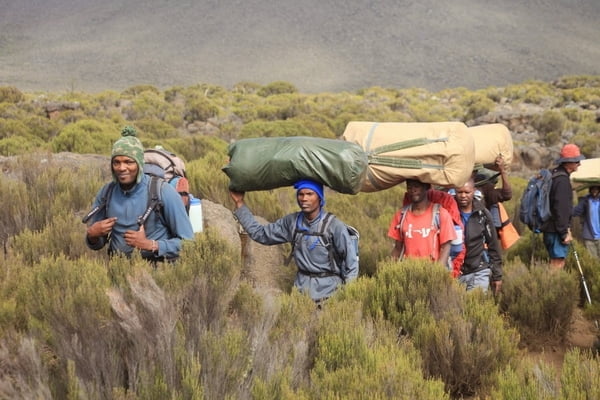
The porters on the route are always in a good mood - today they have a job, tomorrow they may not have it
Do I have to do the summit push by night? Why can't I go out at dawn?
The base of Kilimanjaro is covered by rainforests and, closer to midday, under the influence of solar heat, large amount of moisture begins to evaporate, by forming the so-called "thermal" clouds. As Kilimanjaro is the highest mountain in the area, it attracts all the clouds. So in most cases, in the afternoon, the peak of Kilimanjaro is always closed by fog and mist descend to the steep scree slope. This is not the most pleasant experience. That is why the local guides go to the assault at midnight or even earlier. On average, the climb to the top from the summit camp takes about 8 hours, so after dawn meeting on Africa's rooftop you still have enough time left to go down to the summit camp with good weather. And there is another point to which I want to draw your attention: try to get out as soon as possible to be the first on the trail and do not try to steal a couple of extra hours of sleep. The reason I recommend to do it, is because the path from the summit camp to the edge of the crater serpentine climbs up the steep scree slopes. Groups that are above you, the slope may accidentally knock a small stone, which can be typing speed, get into the group, which is below the slope. Believe that roar of rolling stones on top of you in complete darkness is not exactly what you expect from your high-altitude adventure.
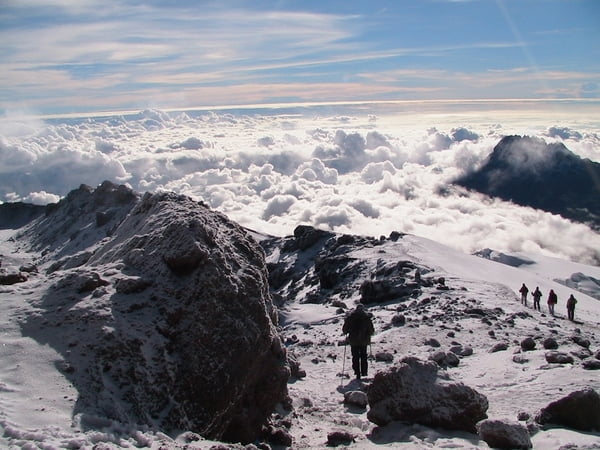
Often, the last few meters before the summit are composed by slippery crust of frozen snow. Trekking poles may be helpful here!
What is Kibo, Uhuru and what these names have in common with Kilimanjaro?
Kilimanjaro is a big mountain massif consisting of three volcanoes, one of which is an independent Mount. The names of these volcanoes are Kibo, Mawenzi and Shira. From a technical point of view, you do not climb Kilimanjaro but the volcano Kibo. Volcano Kibo (like most volcanoes) has several peaks, which are located on its crater. The highest point of the Kibo volcano is Uhuru Peak. Are things clearer now?
If I get sick on the top, can a helicopter pick me up there?
There is no such a case in the history of climbing Mount Kilimanjaro. At least, I haven't heard any. The closest heli is located in the capital Nairobi and theoretically (just theoritically) it could land at the summit camp located at 4700 meters ASL. However, I wouldn't rely on a heli. The only reliable vehicle at the top of Mount Kilimanjaro is your legs, so don't get you in the situation when you can't count on it.
Can I do a solo climb?
Yes, you can. Just one question... Why?

